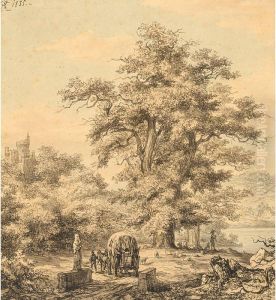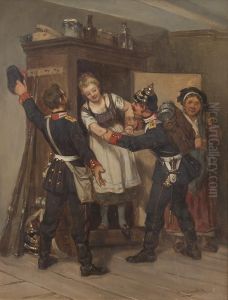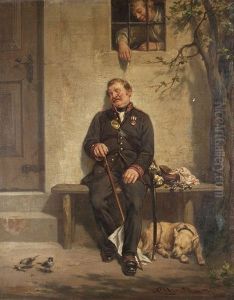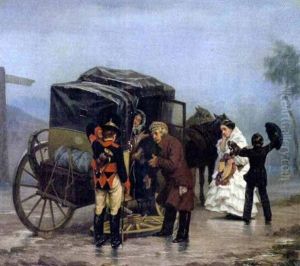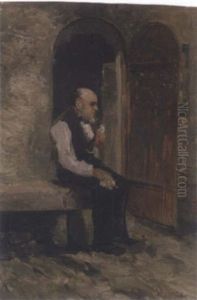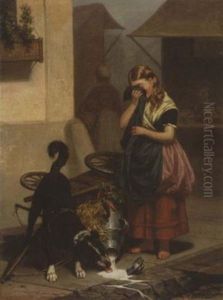Carl Johann Arnold Paintings
Carl Johann Arnold, born in 1829, was a Prussian painter known for his genre scenes and portraits. He was part of the Düsseldorf school of painting, a group of artists who studied and worked at the Düsseldorf Academy of Arts in the mid-19th century. The academy was one of the most influential art schools in Europe at the time, attracting students from various countries and focusing on meticulous craftsmanship and academic technique.
Arnold's work was characteristic of the Düsseldorf school's attention to detail and its emphasis on narrative and historical subjects. His paintings often depicted scenes from everyday life, imbued with a sense of realism and emotional depth. Arnold was not only a painter but also a teacher, passing on the traditions and skills of the Düsseldorf school to a new generation of artists.
Throughout his career, Arnold exhibited his work in various prestigious venues. His reputation grew as he continued to produce work that resonated with both critics and the public. Despite the changing tides of artistic fashion, Arnold remained committed to the academic style of painting, which began to face competition from emerging movements such as impressionism towards the end of the 19th century.
Carl Johann Arnold lived through a period of significant change in the arts, witnessing the transition from traditional academic art to more modern movements. He passed away in 1916, leaving behind a legacy as a proponent of the Düsseldorf school and an artist who captured the spirit of his time through his genre scenes and portraits.

